History of Chinatown Integrated Souvenirs
Exhibition design, physical computing, installation, web design
An exploration on interactive exhibitions and integrated souvenirs through the history of Chinatown.
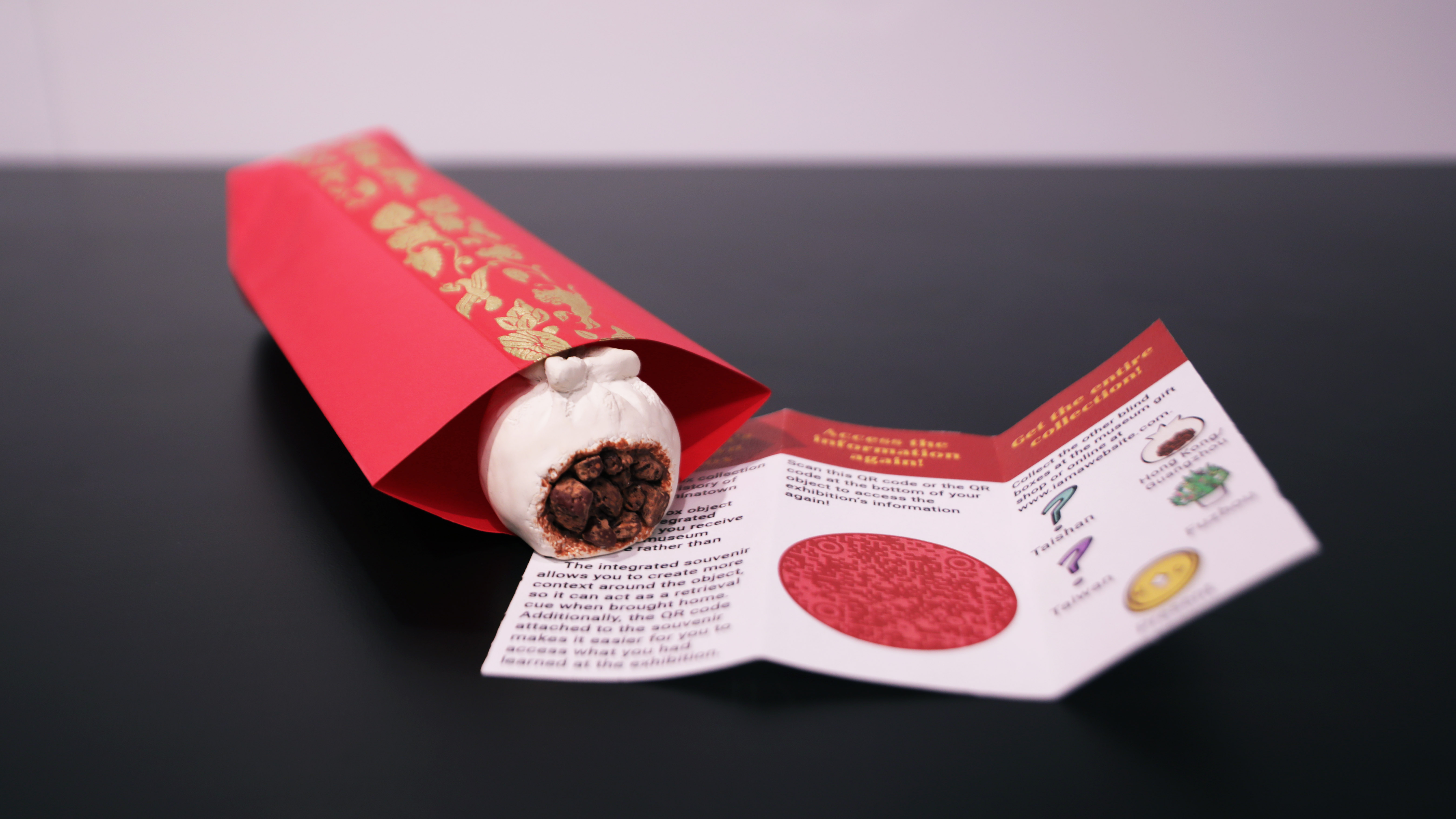

FINAL BLIND BOX WITH ITS CONTENTS AND USER INTERACTING WITH FINAL PHYSICAL INTERFACE
About the Project
Souvenirs are an essential part of the museum experience, but currently, souvenir shopping is the final step of the museum visit, separate from the exhibition. There is a disconnect between exploring the exhibitions and buying the souvenirs that turns the souvenir into a commodity that lacks context. History of Chinatown Integrated Souvenirs explores how integrated souvenirs, souvenirs that are received in the middle of the museum exhibition experience, creates more meaningful souvenirs and increases information accessibility.
I made the integrated souvenirs using polymer clay and 3D modeling and printing. The laser cut physical interface holds an Arduino which connects to p5.js. Through a color sensor, the souvenirs are able to pull up the websites designed and coded by me with HTML, CSS, and Javascript.
This semester-long project was done as my undergraduate Capstone project which also includes a 4,000 word research paper and ten minute presentation.

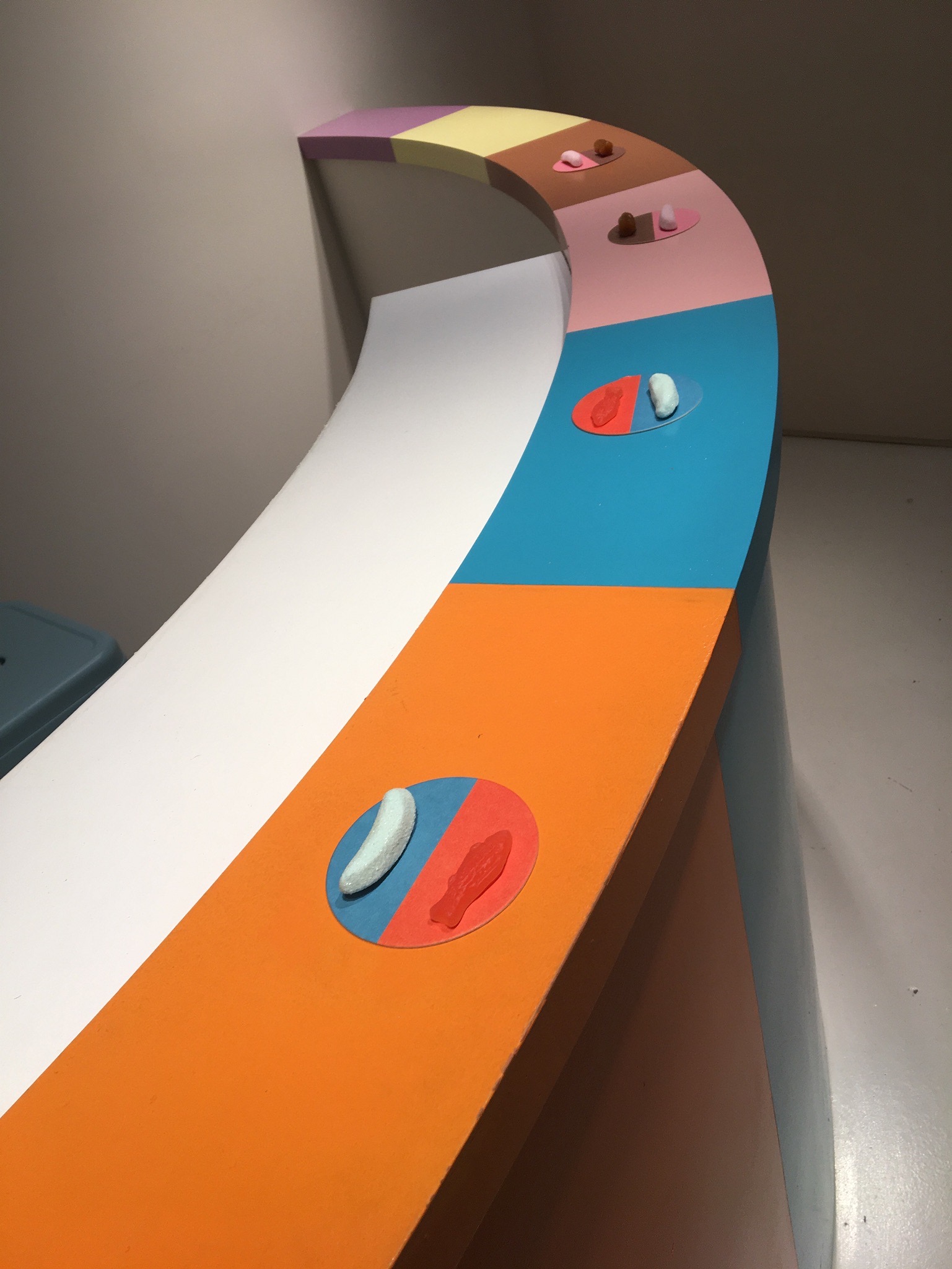
COLOR FACTORY AND CANDY, AN EXAMPLE OF A PHYSICAL INTEGRATED SOUVENIR
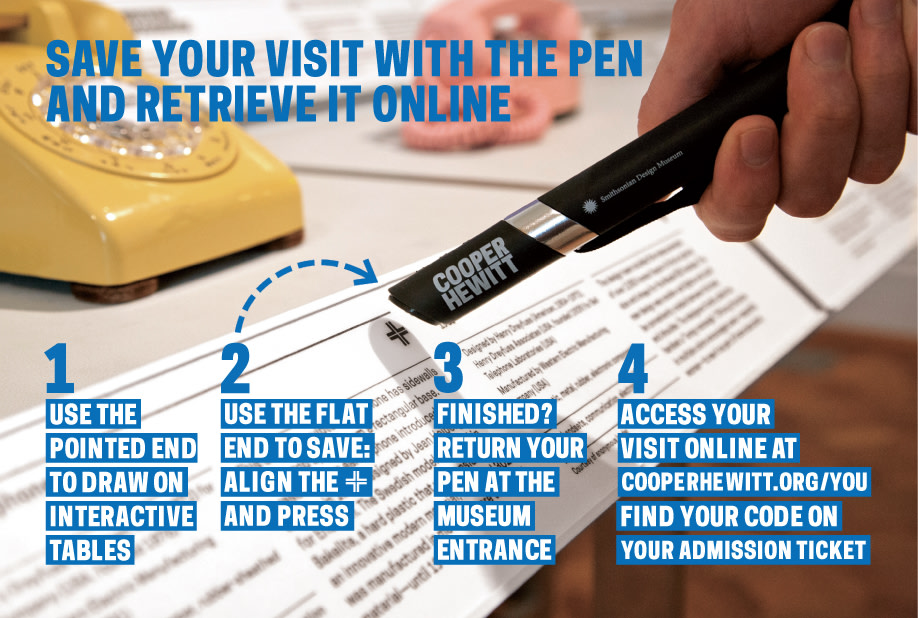

COOPER HEWITT PEN AND COOPER HEWITT TICKET WITH PERSONALIZED CODE
Related Projects Research
Before creating my own interactive exhibit with integrated souvenirs, I looked to exhibits and museums that have already done it, so I focused on the Color Factory and the Cooper Hewitt Smithsonian Design Museum.
The Color Factory, an art exhibit about colors that makes up New York City, uses physical integrated souvenirs to allow visitors to experience color in a multi-sensory way. The souvenirs include small pins to wear and candies or drinks to consume on the spot. Through the physical integrated souvenirs, the visitors create context for the exhibition while my integrated souvenirs are meant for creating context around the souvenir.
The Cooper Hewitt Smithsonian Design Museum uses digital integrated souvenirs that are collected through the Cooper Hewitt Pen, a custom piece of new technology made for the museum. The educational digital souvenirs are accessed through a code on the visitor’s museum ticket. However, the new technology is not always reliable and the ticket with the access code is easy to lose.
The purpose of my project is to create meaningful integrated souvenirs that help visitor’s revisit the exhibition’s content easily through well-established technology. Although the Color Factory has physical integrated souvenirs, the souvenirs are meant to enhance the experience not the memories. Some of Color Factory’s souvenirs could serve as retrieval cues for the experience, but many are consumed at the exhibit. On the other hand, Cooper Hewitt has educational digital integrated souvenirs, but the new technology is not reliable and can be very frustrating. My integrated souvenirs would create context of the exhibition while being accessible by using QR codes and websites.
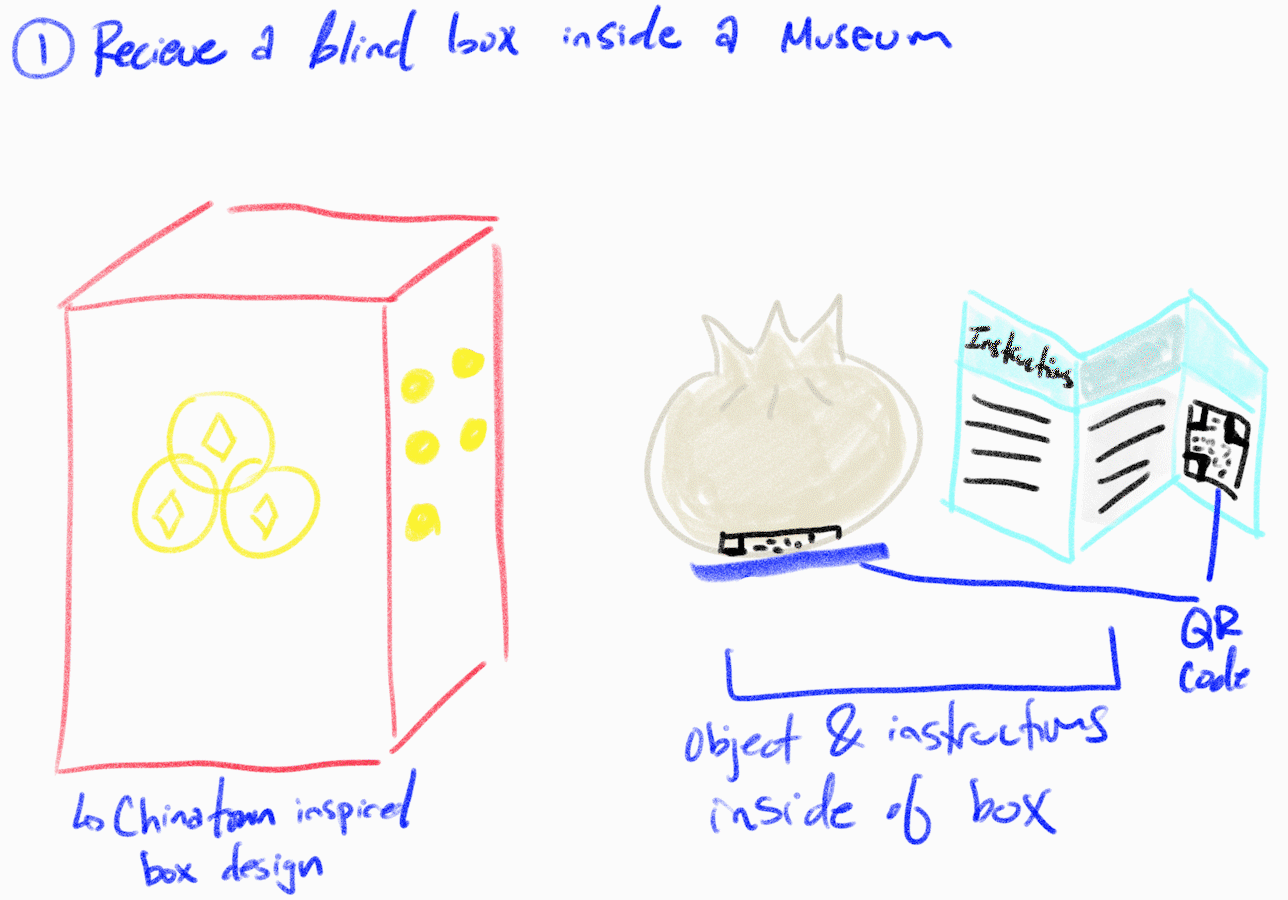

SKETCHES BRAINSTORMING INTERACTION AND ALL THE INTEGRATED SOUVENIRS AND PAMPHLETS
History of Chinatown Exhibition
Since the exhibition these integrated souvenirs are a part of is on the history of Chinatowns in New York City, this exhibition would ideally be at the Museum of Chinese in America (MOCA) in Lower Manhattan. The exhibition details the history of the different Chinatowns across New York City, and for Manhattan’s Chinatown, the exhibition describes the history based on the five different waves of people that arrived in Manhattan: Tiashan, Hong Kong/Guangzhou (HK/GZ), Taiwan, Fuzhou, and present.
Each group of people has a souvenir that corresponds to it, for example, the HK/GZ group has a pork bun representing its dim sum history. The souvenir comes inside a blind box which also includes a pamphlet explaining the integrated souvenir. Blind boxes are a form of packaging where buyers do not know the contents of the box which adds a collectible quality to the integrated souvenir. The theme of each souvenir was chosen by finding something meaningful to each group, and then I made them using polymer clay, 3D modeling, 3D printing, and fake flowers. At the bottom of each souvenir is a QR code that is also on the pamphlet included in the box.
MUSEUM INTERACTION AND HOME INTERACTION WITH INTEGRATED SOUVENIRS
Museum Interaction vs Home Interaction
The integrated souvenirs have two different interactions depending on if the user is at the exhibition or not.
When the user is at the museum, the user will receive the integrated souvenir as they are viewing the exhibition. After opening the box, the visitor will place their souvenir on a laser cut platform with a frosted acrylic sheet acting as a monitor screen. Once on the platform, a color sensor will recognize which type of souvenir was placed on the interface. For example, if the pork bun was placed on the platform, the webpage would be about the history of HK/GZ in Manhattan’s Chinatown. Then, the monitor will display the corresponding website for the souvenir. The website contains history about the group of people, an in-depth reasoning for the souvenir, and things to check out in Chinatown related to the group. The museum interaction gives more meaning to the souvenir, forming context and memories around the exhibition’s content. The souvenir becomes a better retrieval cue, making it more purposeful than a souvenir bought at at a gift shop after the exhibitions.
Once the users leave the museum, they can interact with the souvenir through the QR codes at the bottom of the souvenir or on the pamphlet. QR codes were chosen because they are easy to use, web-based, low cost, and reliable. (For a more detailed explanation, please read my research paper!) Once the QR code is scanned, the users are taken back to the same webpage they saw during the museum experience. Although the souvenirs act as retrieval cues, the users will not remember everything perfectly, so the QR codes allow users to easily revisit the museum information again.
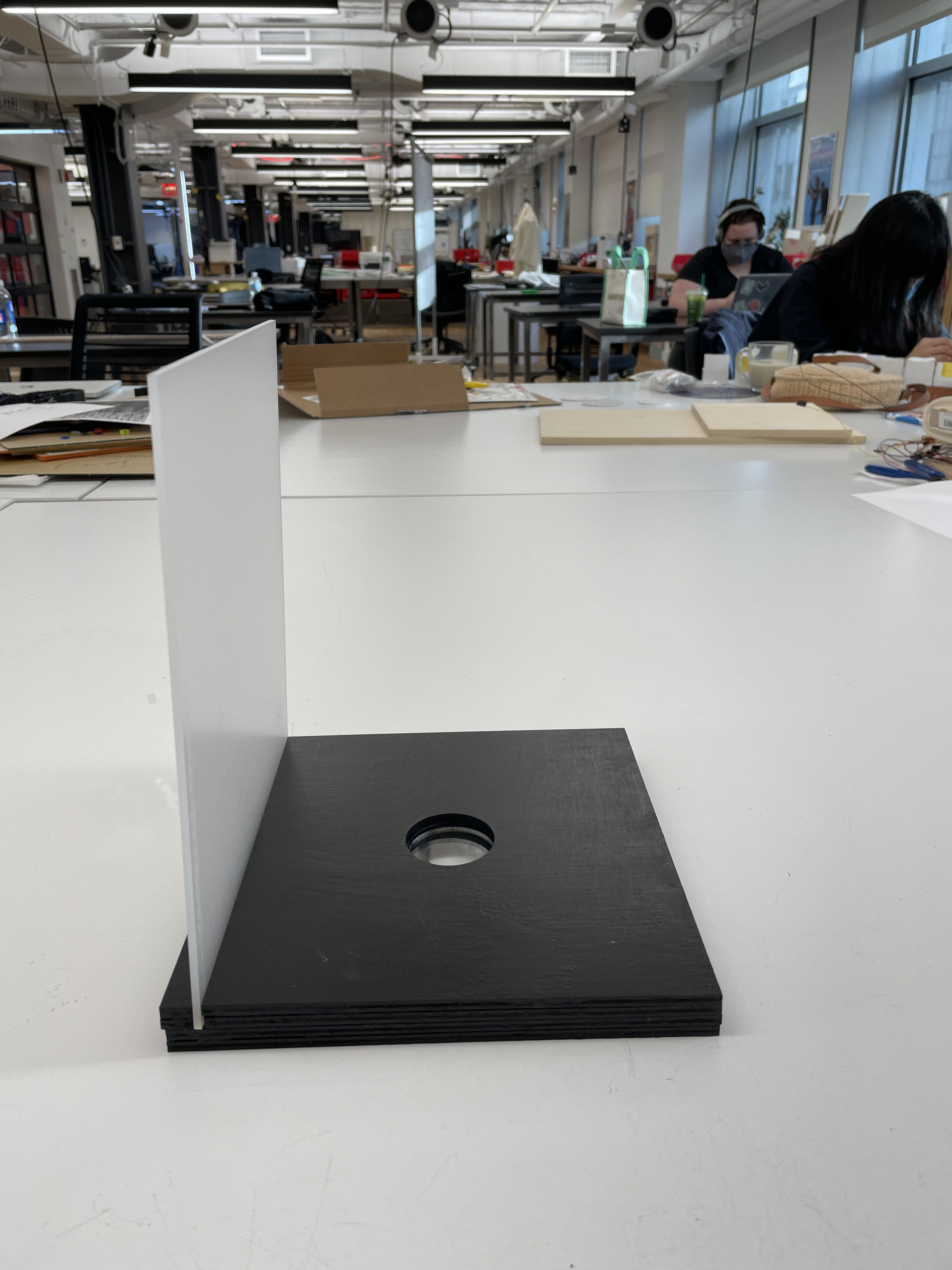
TESTING COLOR SENSOR AND FINISHED PHYSICAL INTERFACE

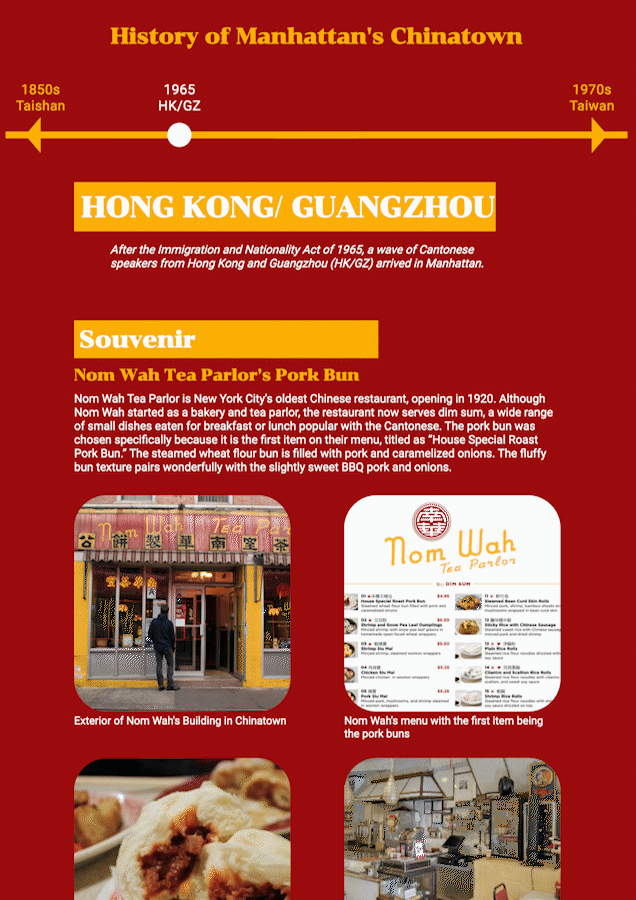
LO-FI WIREFRAME AND ONE FINISHED PAGE OF WEBSITE
Exhibition Creation
The physical interface to recognize the souvenir was made by laser cutting thin pieces of wood and stacking them together. Underneath the platform was a color sensor that was connected to an Arduino. Once the color sensor recognized the type of souvenir, the data was sent from the Arduino to p5.js which would display the appropriate web page.
The website was hand coded using HTML, CSS, and Javascript. The navigation bar at the top of the page is a timeline that allows users to explore the pages for the other groups of people, so they are not limited to the group the souvenir is associated with.
The branding type of the exhibit is Chonburi because of the geometric high contrast properties of the typeface. I wanted something that had high contrast but still felt modern and artistic because I was inspired by traditional Chinese calligraphy. I wanted the exhibition’s visual design to relate to the exhibition’s content while still being legible.
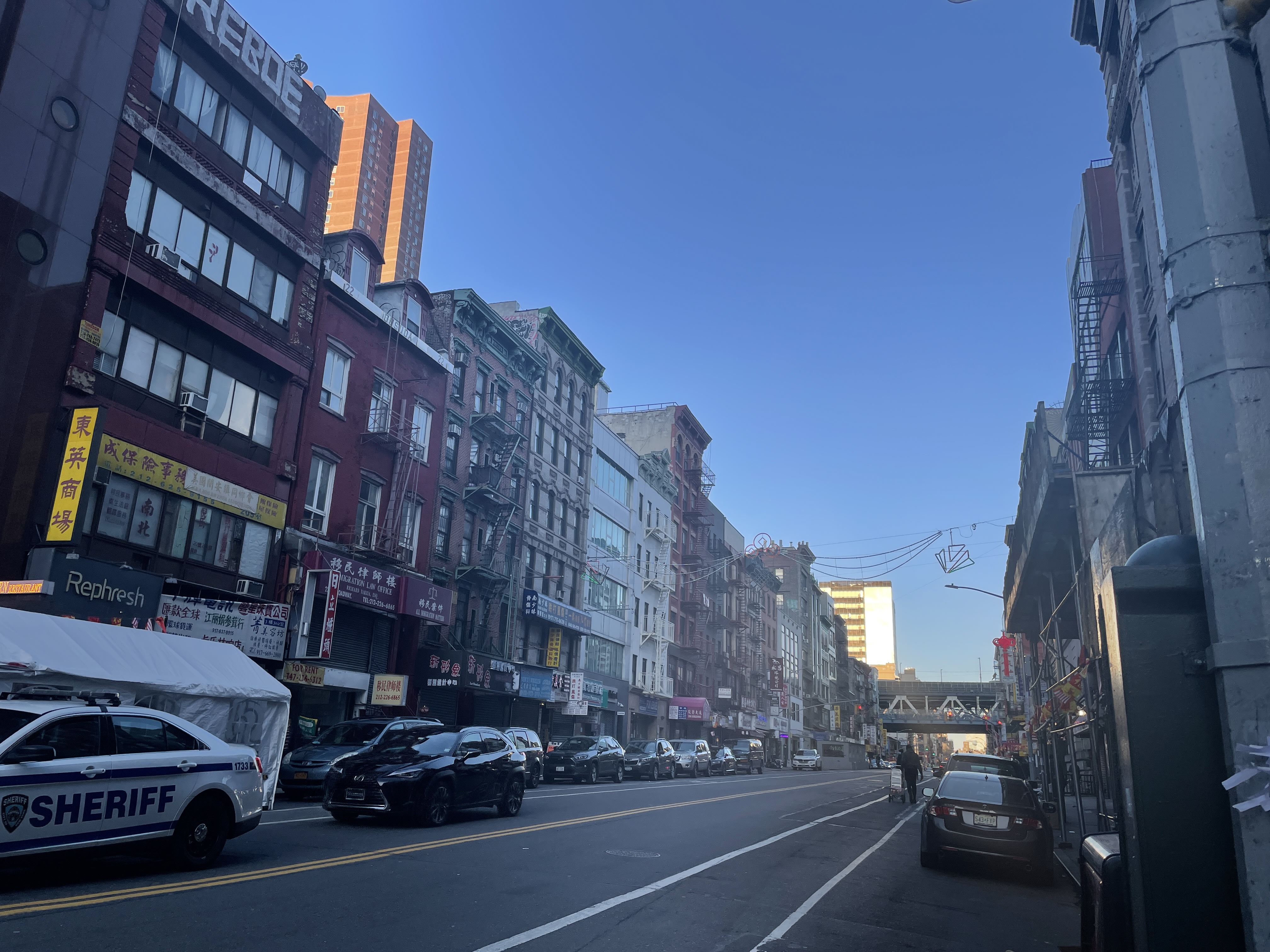
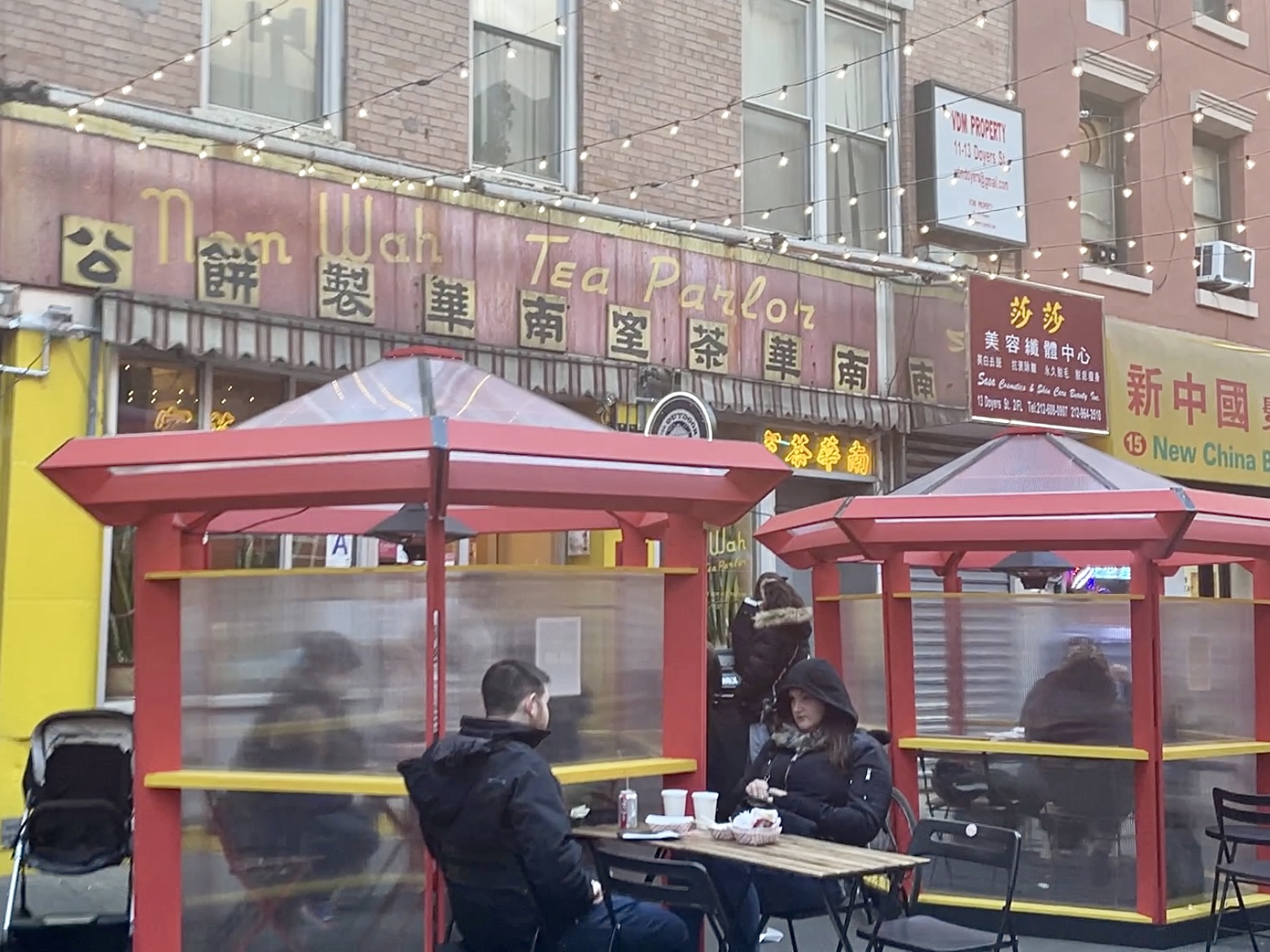
WHAT I SAW WHILE EXPLORING CHINATOWN FOR RESEARCH
History of Chinatown Research
For the website content, I looked up information online and went on excursions into Chinatown. The research presented on the website is not complete because this project is not a research project on the history of Chinatown. This research and website is the content used to explore a bigger question about exhibition design and souvenirs. I would love to develop this project further one day and do a real exhibit about the history of Chinatown with real research, but given the time constraints of this Capstone, this is what I was able to come up with.
Despite the incompletion of research, I still learned a lot about Chinatown. It never occurred to me that Chinatown would be made up of people from different regions of China and that this would cause tension and new Chinatowns. I also learned to appreciate Chinatown for more than its great restaurants. As I explored the streets and walked into stores, I was able to experience the nuances of the rich neighborhood.
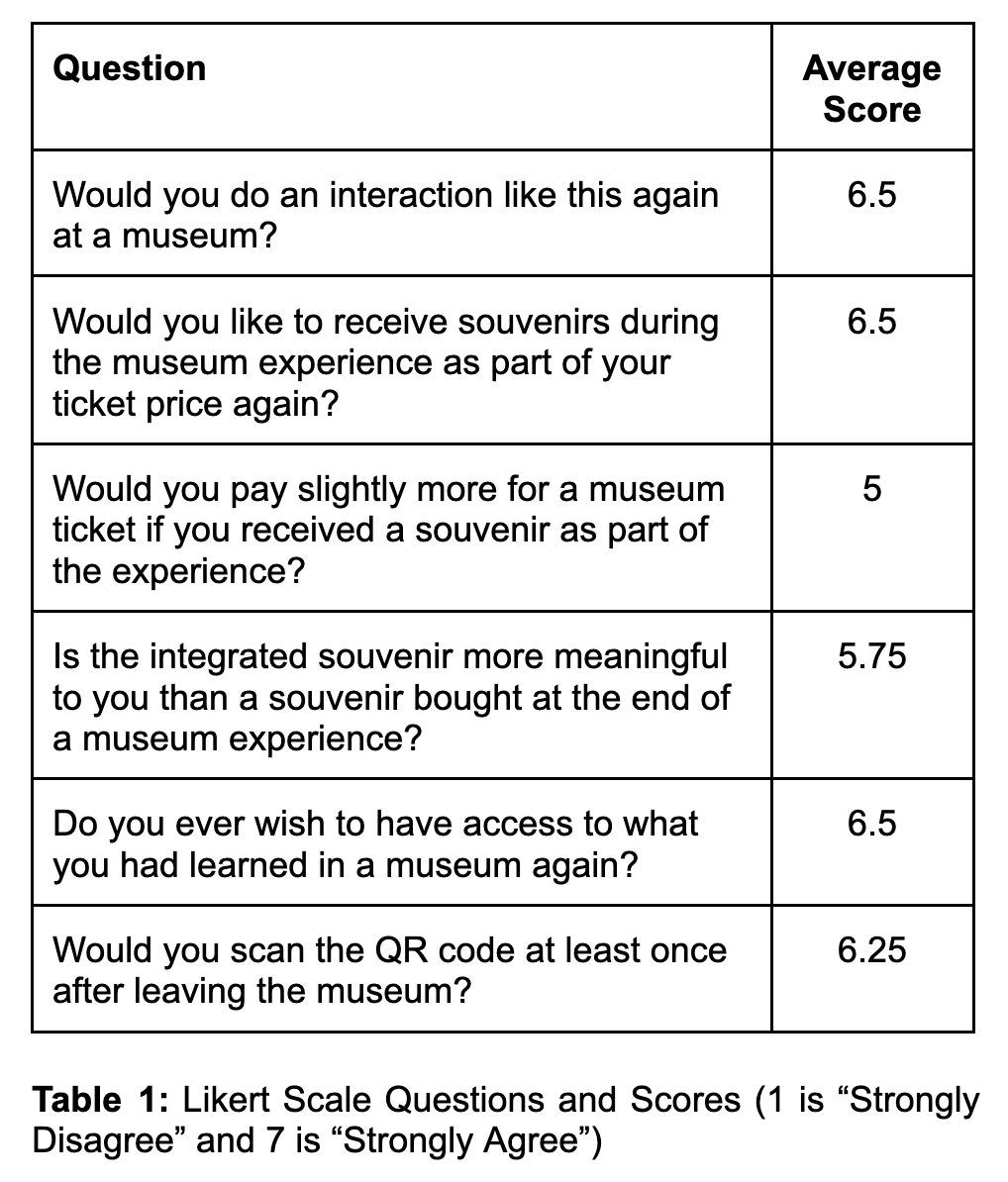
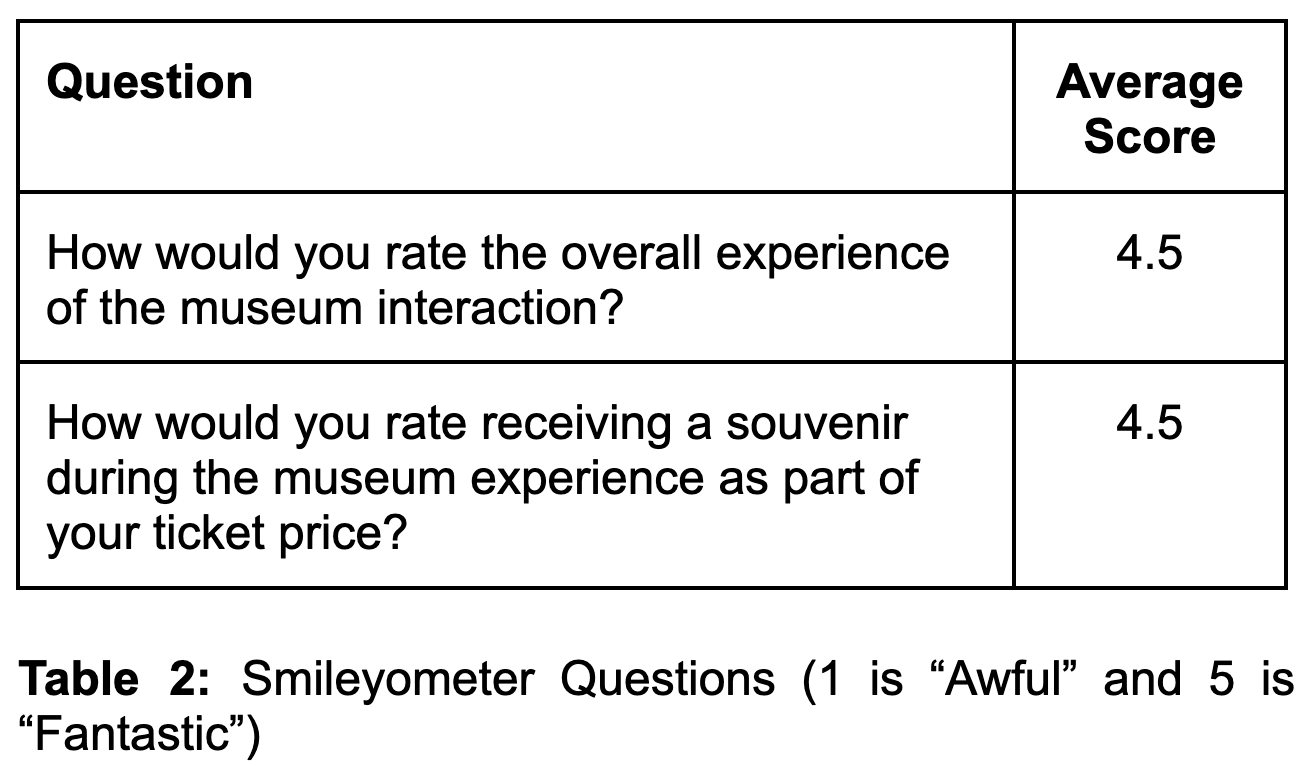
EVALUATION RESULTS
Evaluation and Next Steps
To evaluate this project, I had four users go through the museum scenario as well as the post-museum interaction. Afterwards, they filled out a questionnaire and participated in an interview to expand on their questionnaire answers.
Overall, all the responses were positive to questions such as “Would you scan the QR code at least once after leaving the museum?” and “Is the integrated souvenir more meaningful to you than a souvenir bought at the end of a museum experience?” The results confirm my hypothesis that integrated souvenirs would help with accessibility to museum information and that integrated souvenirs are more meaningful than souvenirs bought after the museum experience, but there is still a lot of room fore research and testing.
For the future of this project, I would like to make the interaction more engaging, complete the research on the history of Chinatown, and have more diverse and thorough testing on the integrated souvenirs and interactive exhibition.